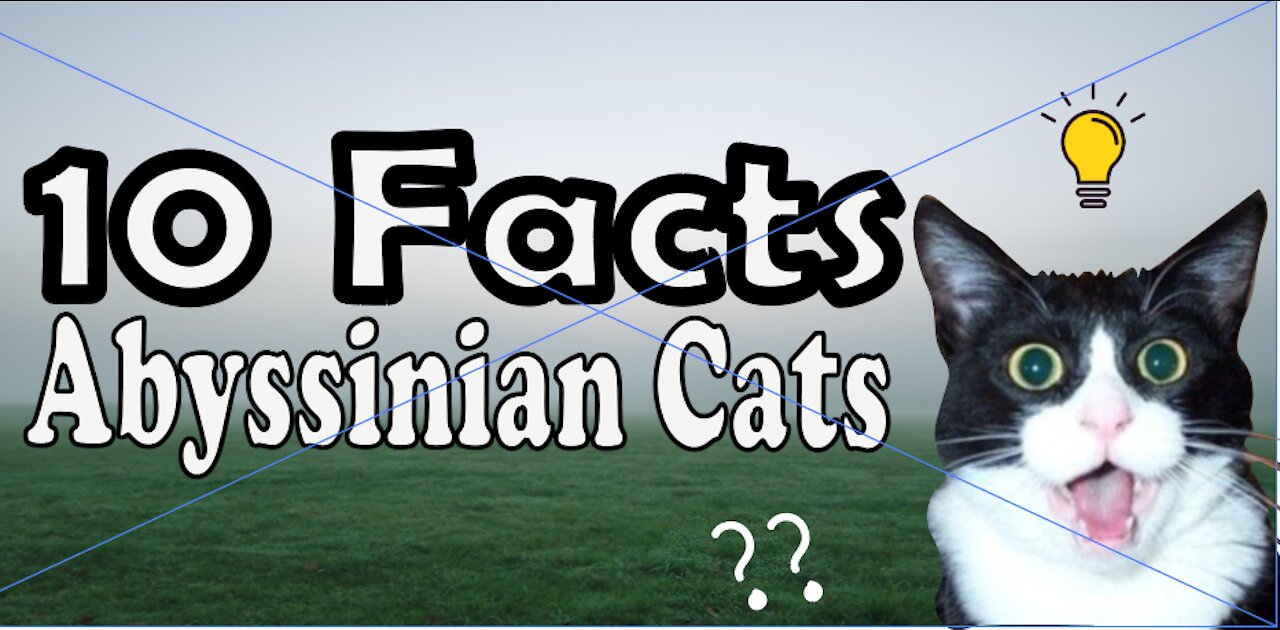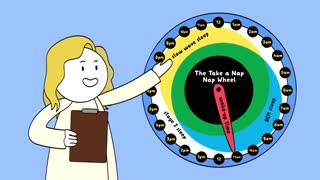Premium Only Content

10 Facts about Abyssinian CATS
Licensor Info:
"
In today's video, we are going to talk about interesting facts and myths surrounding the Abyssinian Cat.
Among the most popular cat breeds, the Abyssinian is easy to care for, and a joy to have in your home. They’re affectionate cats and love both people and other animals.
The Abyssinian is a medium-sized cat with a long body and nicely developed muscles. She is an active cat that loves to jump and play.
The Abyssinian is moderate looking in all aspects with smooth planes on her head. She has a gentle dip in the triangular head. Her rather large ears sit tilted forward on her head giving her an alert, aware look about her as if she is always paying attention to everything that is going on around her. Her eyes, which look large on her face, show the alertness and intelligence inherent in the breed.
The coat on the Abyssinian is short and has tufts of hair in her ears. The coloring of the Abyssinian is very special. The majority of the fur has bands of color on each individual hair with the coat looking darker along the spine line. The color on her body softens and lightens under the neck, and the underside of the cat, and the insides of her legs.
Here are some interesting facts about Abyssinian Cats that will amaze you and that will make you admire them even more!
1. Abyssinian Cat's Personality.
While an active cat, the Abyssinian is an easy cat to have in your home. They love people and other animals. They will play with their own toys for hours but also enjoy a good period of time of interactive play with their parents. They will talk to you in a soft, quiet voice. The Abyssinian is loving and affectionate and loves to spend time with her parent. While the Abyssinian coat is easy to care for, the Abyssinian likes being combed or rubbed with a chamois cloth.
2. THE ABYSSINIAN IS NOT ACTUALLY FROM "ABYSSINIA".
Contrary to its name, the Abyssinian cat isn’t actually from Abyssinia, which is a historical name for Ethiopia. The name stems from the popular belief that British soldiers who fought in the Abyssinian War returned to England in the late 1860s with cats purchased from local traders. In fact, modern-day genetic research suggests that the cat may have gotten its unique coat pattern from felines who lived in coastal areas of northeastern India, or parts of southeast Asia. The breed itself is likely a fusion of tabby British shorthairs and a mysterious imported breed.
Another fanciful origin story is that the Abyssinian is descended from ancient Egyptian cats. This is likely due to their long necks, big ears, and almond eyes, which make them resemble paintings and sculptures of the revered animals.
3. THE ABYSSINIAN APPEARED IN EARLY CAT SHOWS, BREED BOOKS, AND MUSEUMS.
No one quite knows when Abyssinian cats first arrived in Europe. However, an Aby made a splash at what's often considered the world's second major cat show, held at London's famed Crystal Palace venue in 1871. Harper's Magazine wrote that the feline was thought to have been "captured in the late Abyssinian War." While that might not have been true, the exotic-looking Abyssinian still won third place.
Abyssinians were also mentioned in one of the earliest English cat breed catalogs, Cats, Their Points, and Characteristics by W. Gordon Stables. The section included a colored lithographic of a cat named Zulu, who was described as belonging to a Mrs. Captain Barrett-Lennard. Sure enough, the myth that the cat hailed from North Africa persisted: "This cat was brought from Abyssinia at the conclusion of the war …”
Meanwhile, the Leiden Zoological Museum in Holland also acquired a stuffed Abyssinian cat purchased around 1834 to 1836. The cat is labeled "Patrie, domestica India," suggesting that the cat indeed hails from the Far East instead of Africa. The taxidermied feline remains in the Leiden's possession today.
"
-
 6:20
6:20
Starko
4 years agoFacts About Naps
20 -
 54:47
54:47
Side Scrollers Podcast
1 day agoSide Scroller Presents KING OF THE KART | MASSIVE MARIO KART TOURNAMENT
139K10 -
 14:47
14:47
GritsGG
19 hours agoRumble Tournament Dubular! Rebirth Island Custom Tournament!
42.9K3 -
 LIVE
LIVE
CassaiyanGaming
2 hours agoClean Water Charity Stream Day 1 - Black Ops 6 Level Grinding
62 watching -
 LIVE
LIVE
PudgeTV
3 hours ago🟣 Greak: Memories of Azur | Gaming on Rumble | September Charity Water Campaign
107 watching -
 DVR
DVR
LarryDickmanGaming
11 hours agoI am what I am and that's all that I am.
5.95K -
 2:39:02
2:39:02
The Pascal Show
20 hours ago $2.81 earned'HE'S THE DEVIL!' Former Mother In Law Breaks Silence On Jake Haro & Emmanuel Haro Case
21.4K4 -
 5:30:10
5:30:10
SpartakusLIVE
14 hours ago#1 Verdansk Sniper gets HACCUSATIONS because of INSANE Headshots
65.1K4 -
 46:18
46:18
SB Mowing
3 days agoShe was LOSING HOPE but this SURPRISE CHANGED EVERYTHING
54.3K49 -
 10:00:10
10:00:10
ItsLancOfficial
14 hours agoWE LIVE 🔴WE LIVE 🔴 SUNDAY SUNDAYS!!!!!!! TARKOV
44.1K3